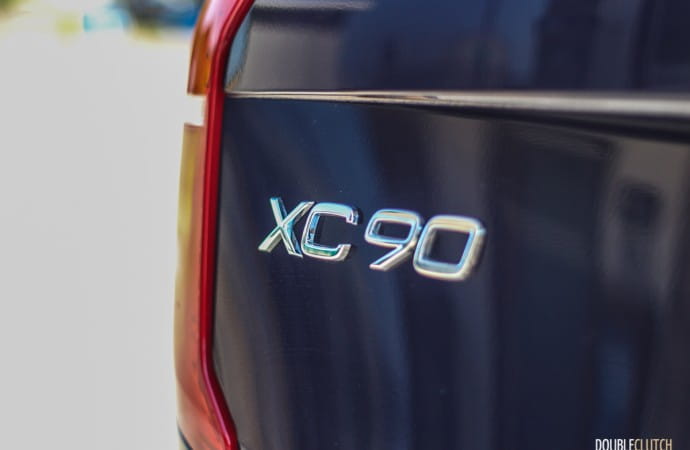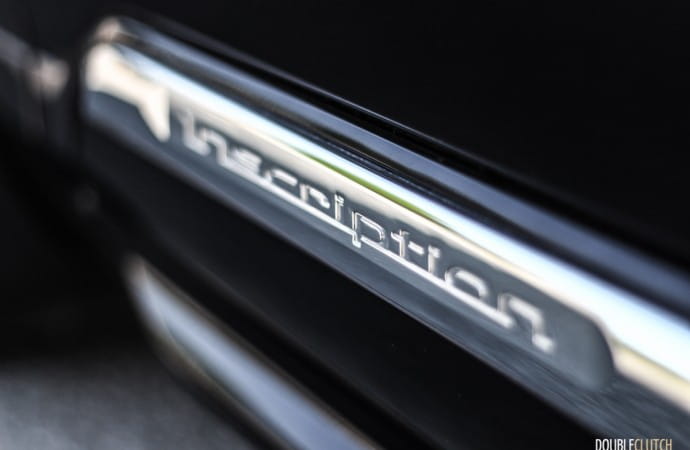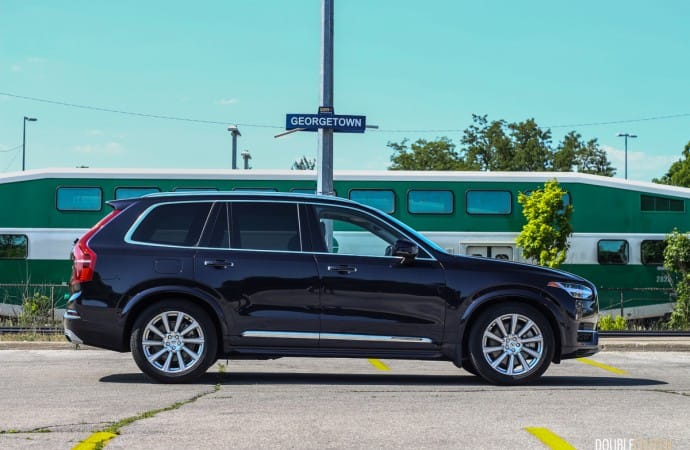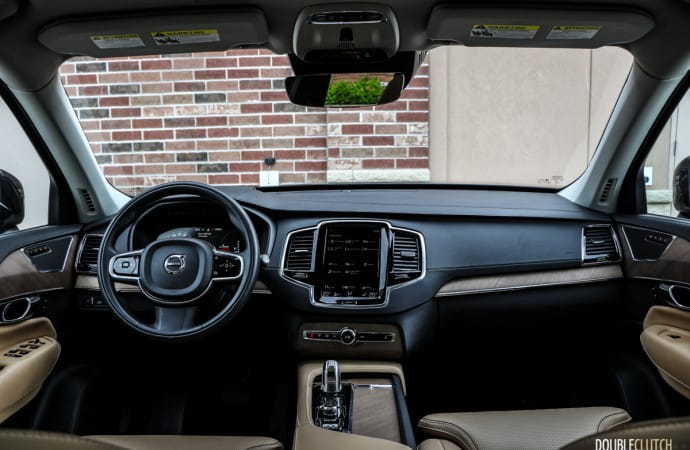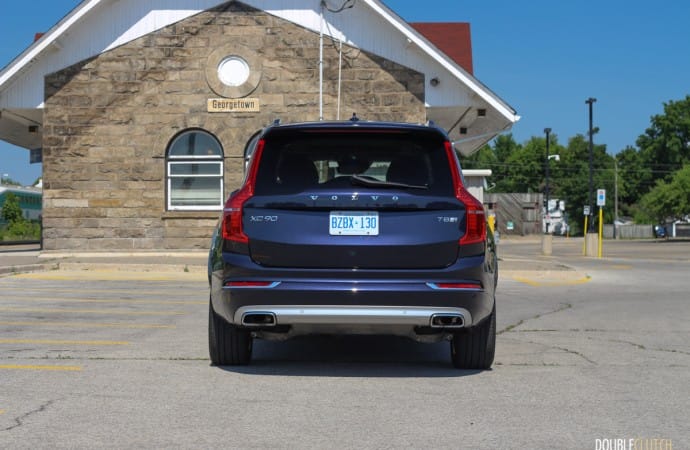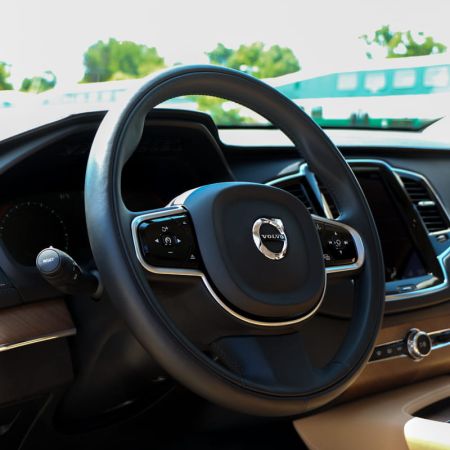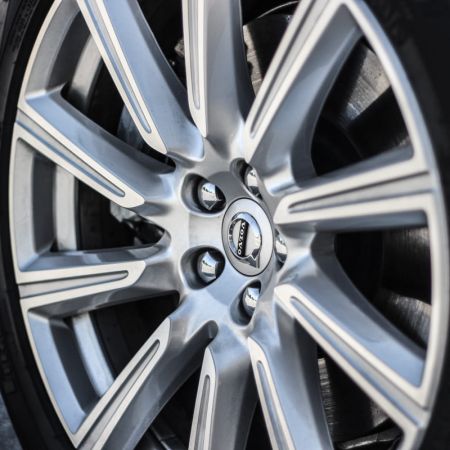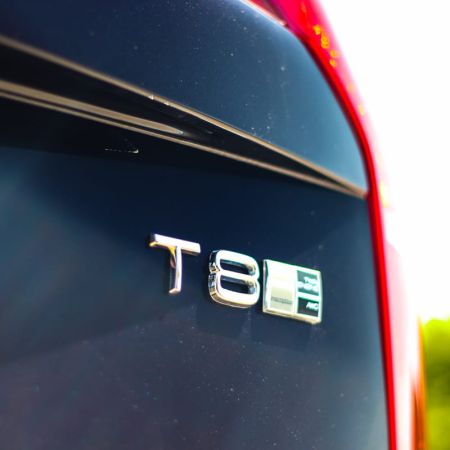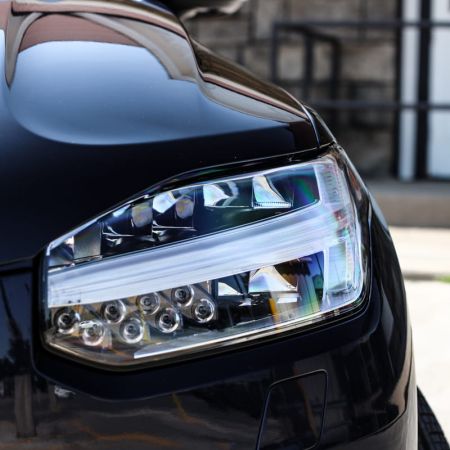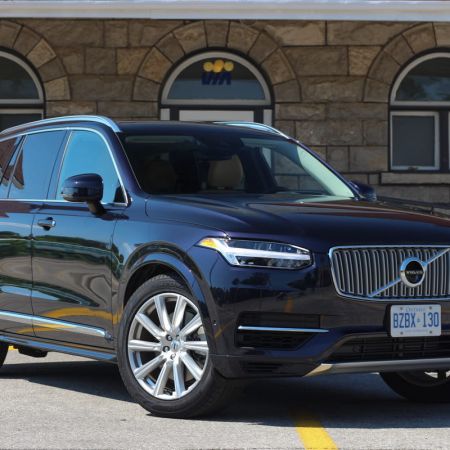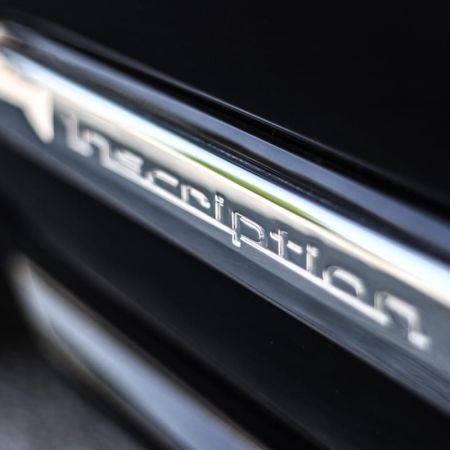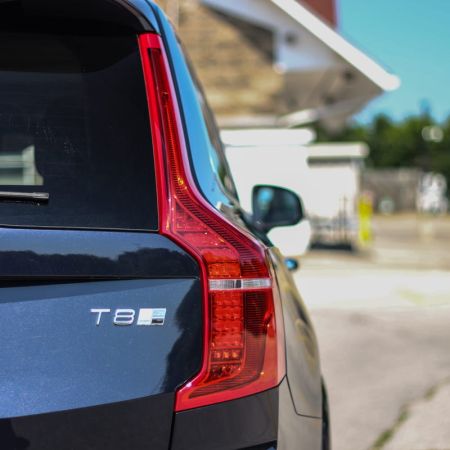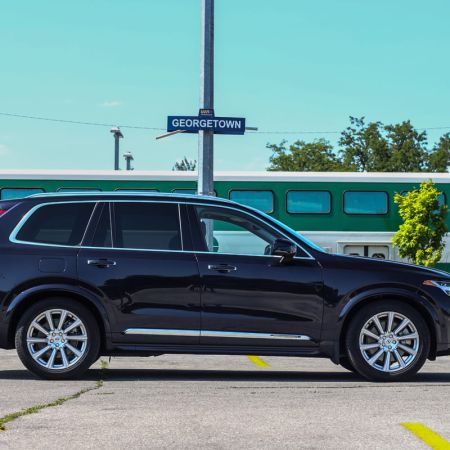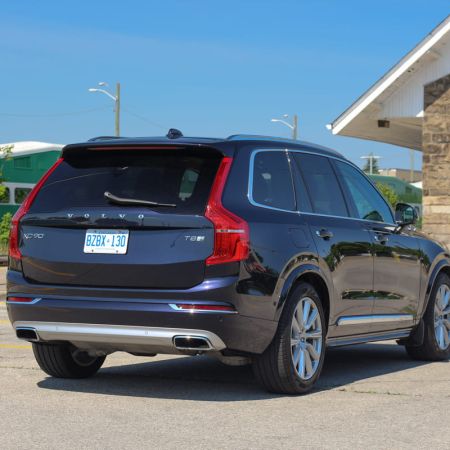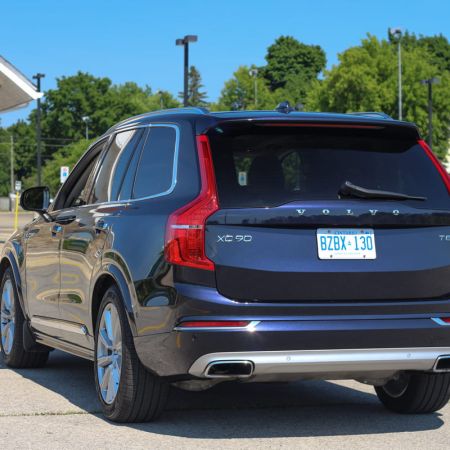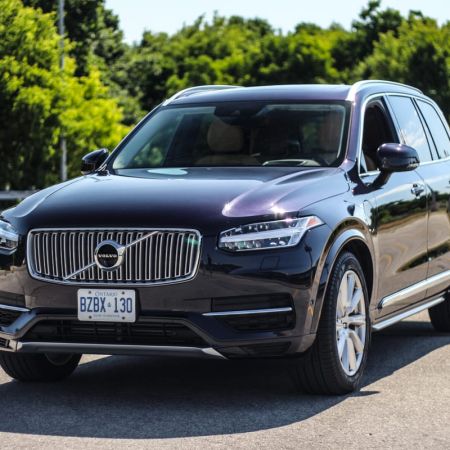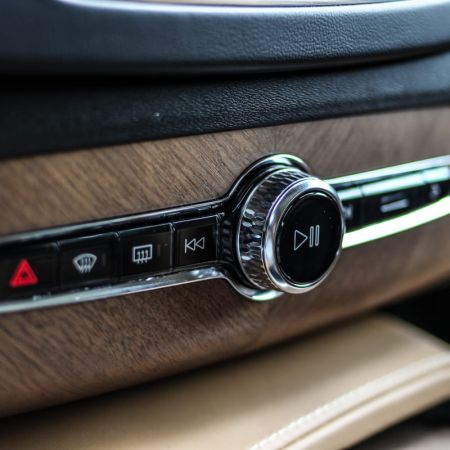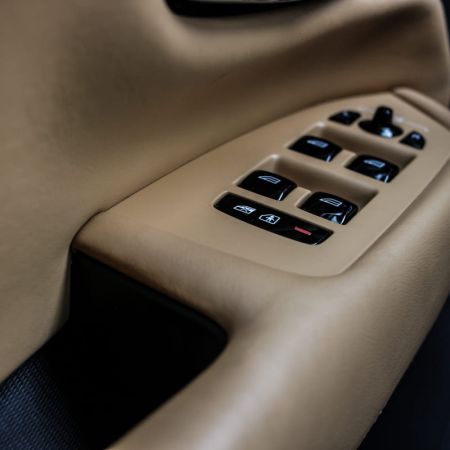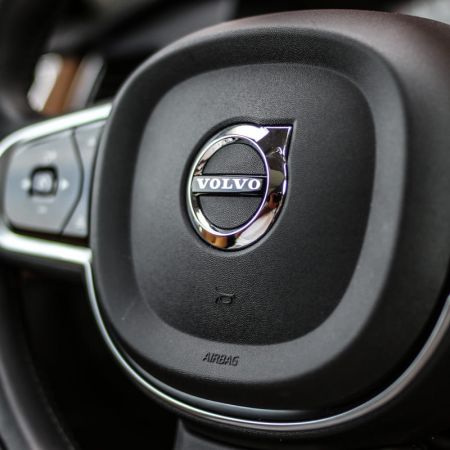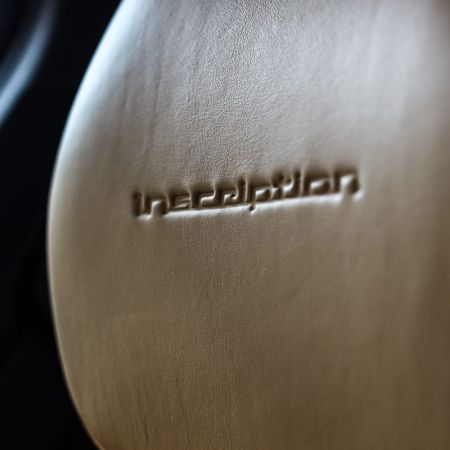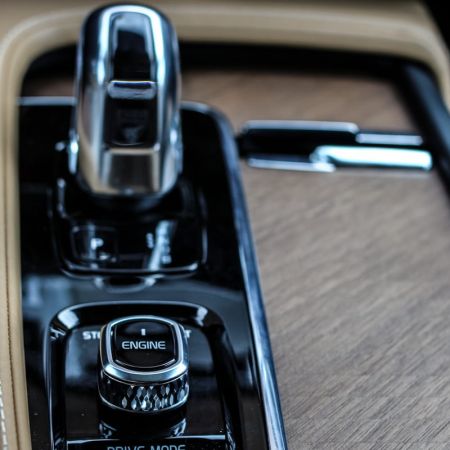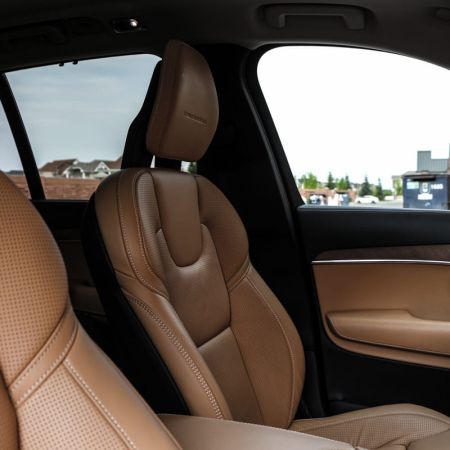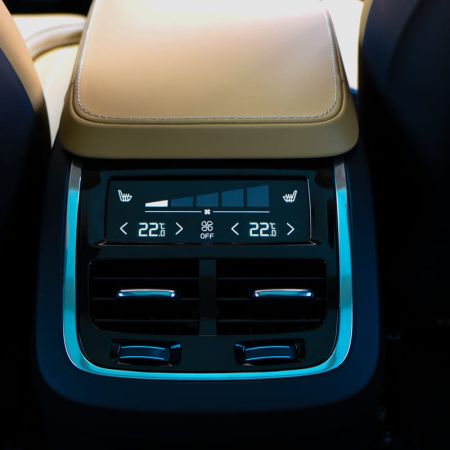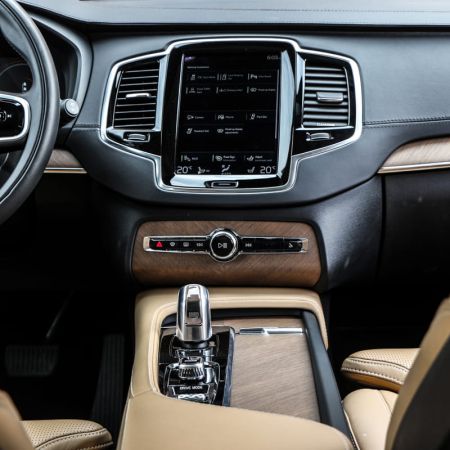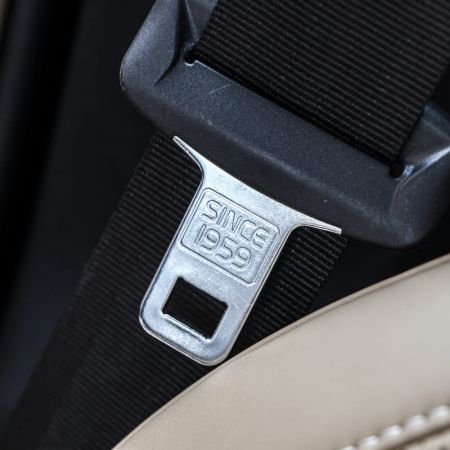This year has proven to be very prolific for the luxury sport-utility-vehicle segment. Two of the oldest entries in the class, dating back to 2003 and 2006 respectively, got complete overhauls and now go head to head. We first sampled the Volvo XC90 (reviewed here) last summer and fell head over heels in love with it. So much so that it earned the DoubleClutch.ca Best Sport-Utility-Vehicle award for the 2015 calendar year. The one we really wanted to drive was delayed by about a year though, and we’ve finally had a chance to spend some time with it up close and center – the 2017 Volvo XC90 T8 Inscription PHEV.
From an aesthetic standpoint, Volvo vehicles have always been conservative. One of our editors has a 1990 Volvo 240 as a winter warrior (beater is just too much of an insult for that car) that is perfectly representative of the brand’s history. Evolving from the traditional styling and maintaining focus on safety and comfort, the new XC90 is attractive to a point of sexy, a rare and difficult feat for a crossover or SUV. This is the best implementation of the conventional two-box design, with distinct Volvo styling cues and some of the best lighting in the industry. The bold will want to choose the optional R-Design appearance kit, which isn’t actually available on the T8.
In tune with the rest of the luxury automakers, where alphanumeric model designations no longer coincide with engine type or displacement, the T8 is not an eight-cylinder powertrain. Instead, all XC90s sold in Canada are powered by a 2.0L inline four-cylinder, turbocharged and supercharged. In the case of the T8, the twin-charged motor is mated to a plug-in hybrid electric system. Total combined output is 400 horsepower at 6,000RPM and 472 lb-ft of torque, available between 2,200 and 5,400RPM. Considering the Audi Q7 (reviewed here) is only available with one engine configuration for now, this gives the XC90 an edge.
Engine response is excellent, and the T8 is straightaway noticeable as faster than its T6 brethren (reviewed here). The twin-charging of the regular models already contributes to excellent low-end pull, but the instantaneous torque of the electric motors helps haul the hefty SUV along with no effort required. Straight line speed is notably faster than the Q7 as well as the plug-in BMW X5 xDrive40e (reviewed here). Where the XC90 T6 ran out of breath was at higher speed highway passes, and the T8’s additional horsepower helps in this regard. This thing is freight-train quick, and power delivery is buttery smooth and quickly responsive to all inputs.
What’s really interesting here is that despite being an all-wheel-drive vehicle, the XC90 T8 eliminates a driveshaft connecting the front and rear axles. Instead, the energy storage unit is stored there. There’s an electric motor wedged between the four-cylinder engine and the transmission which powers the front wheels, and another in the rear responsible for spinning the rear wheels. Despite its weight, the T8 can run to 100 km/h in under 5.4 seconds, thanks to a joint effort between the engines and the intelligent eight-speed automatic transmission.
The XC90 doesn’t just pull in a straight line – its four-corner air suspension (a $2,350 option) makes for exceptional ride quality. The car feels perfectly planted and delivers some of the best body control around today. Whether you’re going straight or cornering, there is no roll or jitter from the XC90, and the driver and all passengers are kept in comfort. This is an expensive option and will likely be a pricey fix if it were to fail out of warranty, but it’s completely recommended for the vastly improved ride. A neat feature on the suspension is a set of buttons in the rear cargo area that allow you to instantly lower the car from the trunk if a lower load floor is required.
Even if the XC90 isn’t plugged in, Volvo’s regenerative technology allows it to operate as a traditional hybrid. However, most will want to take advantage of home or office electricity to generate some energy. When fully charged, the Volvo is rated for 22km of EV-only travel. We were able to squeeze 27km out of one specific charge in ideal conditions, but realistically, drivers can expect to match rated numbers. External temperatures, weather conditions, and driving style are all variables that will have significant impact on battery life.
Something many other hybrids lack, Volvo has a series of drive modes including a “Save” feature. This allows drivers to conserve EV range for a later time, such as a particularly urban part of the commute. On the highway, it’s best to use the gasoline motor as the battery will deplete very quickly at higher speeds. On a regular household 110V outlet, the XC90 will take up to seven hours to charge the battery fully. Use a 220V setup, and this drops to 2-2.5 hours, depending on just how empty it is when you start.
Now, our test consisted of using mostly hybrid mode, with EV charging only taking place at public outlets. Even still, using premium gasoline and liberal use of my right foot, I was able to pull off 9.2L/100km over my test week. The catch here is that I did about 70% highway driving. My colleagues were seeing numbers in the mid-10L/100km range in the regular T6 model, so this wasn’t a huge surprise, but I was glad to see a noticeable improvement in efficiency along with the 85 additional horsepower. Again, efficiency will vary dependent on use and conditions, but Volvo rates it at 10.1L/100km city, 8.8L/100km highway and a combined 9.5L/100km.
Stepping up into the car, it’s realized that the XC90 sets a new benchmark for interior design, quality, and overall premium feel. Even when considering the new Bentley Bentayga and the Maserati Levante, the Volvo has one of the most contemporary and fresh interior layouts in the SUV segment. Our test vehicle was the top-trim Inscription model, so unique interior trimmings were equipped. The stunning leather seats have “Inscription” embroidered onto them, and there are classy touches throughout the cabin. All of the fit and finish is top-notch, and as with the rest of the Volvo lineup, the seats are some of the most comfortable ever made.
The Inscription model starts at $75,750 and already includes a host of standard features. These include 19” alloy wheels, Nappa leather upholstery, navigation, 9.3” touchscreen, ventilated front seats, LED headlights, and wood dashboard inlays. Our car added the optional Vision Package, Climate Package II, Convenience Package, four-corner air suspension, 21” wheels, and heads-up display. Save for the brilliant Bowers & Wilkins stereo that’s available as a standalone option, our car was essentially fully loaded. The as-tested price was $86,375, which is still a bit less than the 2017 Audi Q7 (reviewed here) we sampled recently, not available with any hybrid technology.
The Volkswagen dieselgate scandal has affected the SUV market significantly. Up until this year, the Mercedes-Benz GLE (reviewed here) and Audi Q7 were selling plenty of diesels, and it appeared to be the clear-cut choice for those wanting to save a few dollars at the gas station. However, the 2016 Volvo XC90 T8 Inscription goes a long way to change these perceptions, and provide a worthy alternative to diesel fuel. Hybrid technology is finally at a point where its reliability has been proven, and the smoothness, immediate torque, and ultimate savings are beginning to prove themselves worthy. Volvo has always been the underrated choice, but the new XC90 is undoubtedly sure to impress anyone who gives it the courtesy of a test drive.

